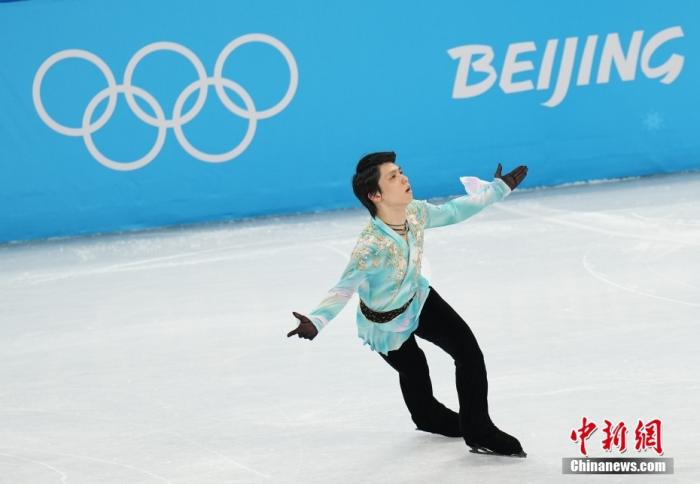China News Service, Beijing, February 11 (Zhang Aolin) Since the start of the Beijing Winter Olympics, the attention of figure skating, one of the highlights, has continued to heat up.
While the various "fights of gods" made the audience feast their eyes, the "Kiss & Cry" (meaning "kiss and cry"), which recorded the joys, sorrows and sorrows of the contestants, also quietly became popular. Netizens said: Very romantic!
On February 10, Japanese figure skater Yuzuru Hanyu competes in the men's single free skating competition.
Photo by China News Agency reporter Cui Nan
"Kiss and Cry"
On February 10th, the figure skating men's singles free skating competition came to an end. Players such as Jin Boyang, Hanyu Yuzuru and Uno Masama all showed their superb skills.
And between the games, they were nervously waiting for the score to be released, which was also impressive.
On February 8, Japanese figure skating player Uno Masama and coach Ranbir were in the waiting area. Ranbir wore a sign with "Kiss & Cry" on his chest.
Sharp-eyed netizens found that during the equalization, many players and coaches wore a sign with "Kiss & Cry" written on their chests, and asked the soul: I understand the literal meaning, but why are you crying here? ?
On February 10, Chinese figure skater Jin Boyang was in the waiting division.
In fact, it's an official word in the world of figure skating, and athletes and coaches who wear the badge can enter the equalization area -- the "Kiss & Cry area".
This area is usually located in the corner of the ice rink and has seating areas and a screen for displaying scores.
It's exactly what it says: players experience a lot of emotional upheaval as they score.
On February 7, American figure skaters Jock and Bates (right) embraced warmly.
When the scores are read, viewers often see players and coaches kissing and celebrating after success, and crying after disappointment.
This small corner records the true feelings of the players.
by a coincidence
As for why the equal partition was originally named this name, there are many theories.
The most widely circulated at present is due to a coincidence.
On February 10, Japanese figure skater Yuzuru Hanyu was in the waiting division.
Before the 1983 World Figure Skating Championships in Helsinki, TV technicians asked Elko, the Finnish figure skating official at the time, because they didn't know the exact names of the divisions.
Elko improvised and replied casually, "This is the corner of kissing and crying."
After that, "kissing and crying" spread around the figure skating world and eventually became the official language of the International Skating Union.
Canadian figure skater Madeleine Sisas and her team cheer after learning the score on February 7.
Netizen comments: very romantic!
@Chai Xiaoduo: Very romantic!
@olymmmm: I saw "KISS AND CRY" written on the player's sign, touching
@ Ling goose is a goose is not na: The names of the divisions such as figure skating turned out to be so beautiful, KISS AND CRY, it is too vivid!
@小花pot: The figure skating is so beautiful, the interaction of the athletes in the KISS AND CRY area is so cute
@ Seven Purple Date Cake: No wonder Hanyu is crying here
@MeowMiaoJiang: This area is as exciting as the competition!
@李小毛的舞:Whether it is joy or regret, whether it is kisses or tears, it is an integral part of competitive sports and the Olympics
(Finish)

